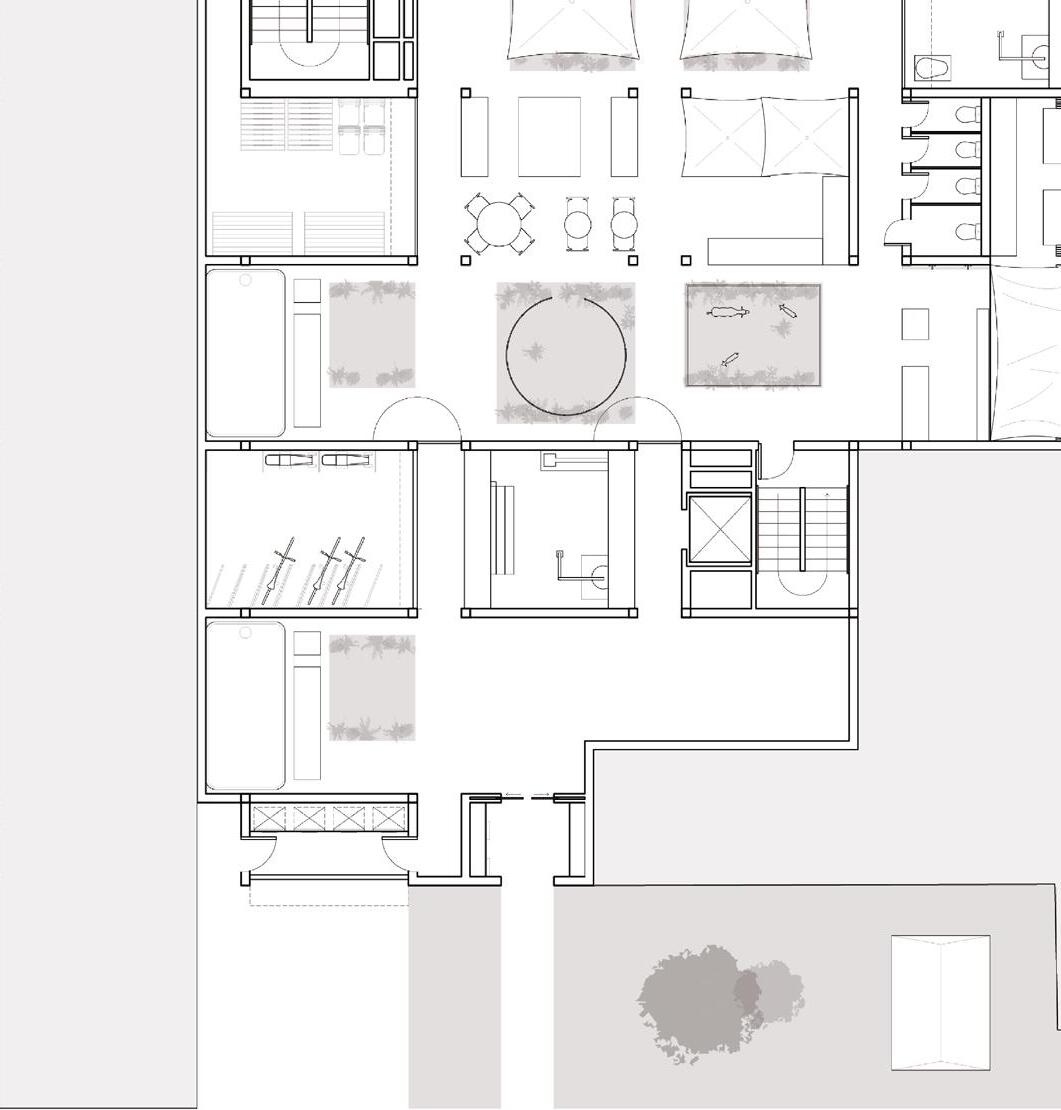
1 minute read
5. The Room
G. Room Types
1. Varying room typologies with a range of different surfaces do not have to vary in size, as long as they are at a minimum of 3mx1.5m (4.5m). Refer to Section 6.a.
Advertisement
2. All rooms regardless of range of surfaces, must have two access points. Thus at no point should an inhabitant be ‘trapped’ in their own dwelling. These access points can be an opening within the hard surfaces. They do not have to be traditional doors or openings.
Each room must have two entrance/exits either as doors, fully operable glazing or sliding partitions.
3. Room type A: Hard Surfaces and Soft Surfaces
• As a minimum standard, a room must provide two types of surfaces. Hard surfaces for storage, work and productivity. Whilst the soft surfaces provide leisure, lounging and rest.
• Hard Surfaces: Materiality which can handle loads through various forces and can be pushed/pulled for accessibility. Refer to Section 6D.
The minimum requirement of soft and hard surfaces is shown in these pre-approved rooms.
3. Room type B: Type A + Wet or Green Surface
• Room B1: This room typology must provide everything included in Type A, with an additional wet surface which can be for either hygiene, washing, cooking or cleaning. Thus the room should accumulate three different surfaces.
• Room B2: Likewise, this type of room should also have three surfaces. The surfaces in Type A, with an extension of a green surface for leisure, growth, plantation and sunshine. The minimum dimensions for green surfaces are stated previously in Section 6F.
• This typology maximises the surfaces at four within a room. This room must provide everything inclusive of Type A and B. Hard and soft surfaces, and wet and green surfaces.
H. ‘Apartments’













